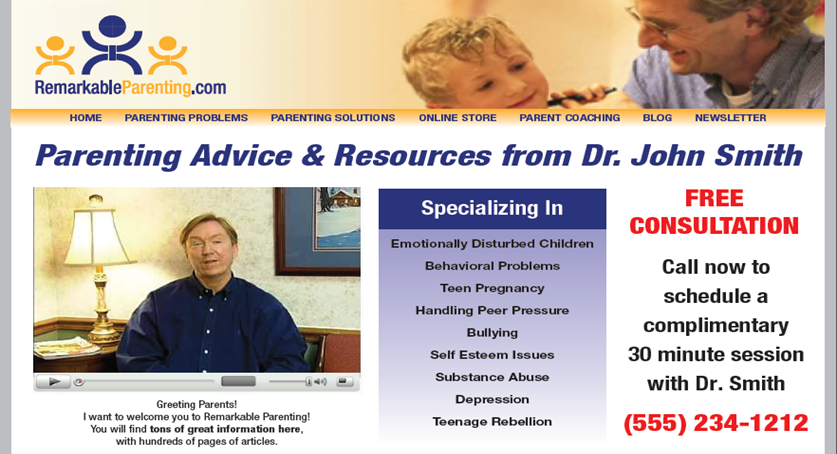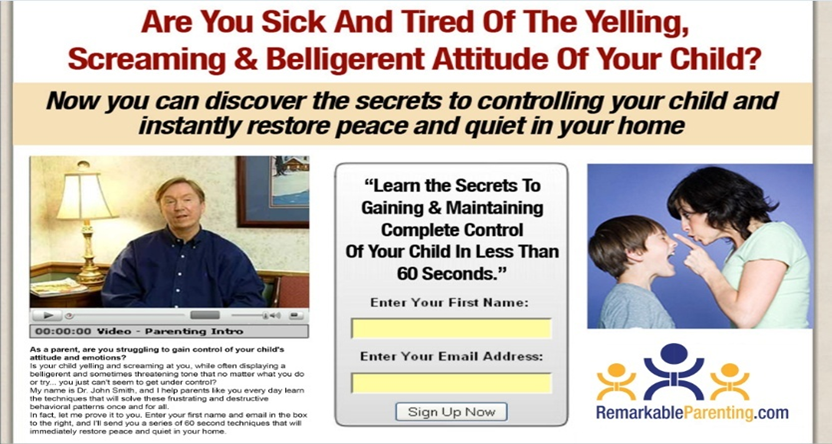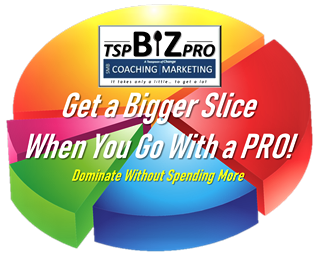Why You’ll Never Reach Your Business Goals Using Local Media Advertising
This is not a singularly simple topic that can be adequately covered in a blog post. I could write an entire book on this subject (in fact, I did), yet I will try to do it some justice here so you will know this is critical to your marketing budget and, more importantly, your revenue and profitability.
I will try to shorten the subject matter as much as possible and still try to provide an accurate overview of what’s really going on in media advertising. There are several variables to consider and I’ll try to cover each one in separate posts so they’ll have more clarity. That said, the underlying principle in this post is the fact that even those variables hardly matter all that much when you truly understand how local media has the results deck stacked against you.
Let me start by saying there’s nothing wrong with advertising on local media. As well, the people (local sales reps) are good people and they truly want you to do well. They would never do anything to hurt you or your business.
Yet, they don’t know what they don’t know. What I mean by that is most business owners assume that in working with a local media rep that the rep actually is more than familiar with, and understands, marketing concepts and strategies. They don’t.
You see, in most media companies your sales rep is not required to have a marketing degree… or any degree for that matter. They receive no training in marketing from their employers and they spend no employer sponsored (paid) hours studying marketing, marketing concepts or principles. That’s not their job.
Message Delivery Platforms
How do I know? Well, with 30+ years of selling media advertising and senior management of advertising teams as well as entire divisions in multiple media platforms and companies, I know first-hand what’s required. A marketing degree isn’t one of them.
Wanna know why? Because media companies aren’t marketing outlets… they are sales organizations. Nothing more. Whether you’re talking about giant Fortune 500 media conglomerates or small town, locally owned enterprises, they all have the same tired business model, core methodology, and outdated technology. These mediums used to work great… 30 years ago. But, that outdated business concept is only part of the problem.
If you think about it, it makes sense that media salespeople do not need to be marketers. That would be like requiring all automotive salespeople to be mechanics. You see, mechanics know all there is to know about autos, but I’ve never seen an ASE certified car salesperson. They might exist, but they’re not the norm. Neither is it the norm in media advertising to have a rep that actually knows proven marketing concepts and strategies.
These are two separate careers requiring two separate skill-sets.
In my 30+ years of selling advertising and managing local media teams, we never spent any time discussing or training on what attributes or components make a good ad. Not one minute about understanding The Buyer’s Journey and how to relate to it in messaging. All of our time was spent in sales training. Period.
Teams are expected to sell to attain pre-defined, yet relatively arbitrary, revenue goals. The media companies are not concerned about you, the advertiser. Of course, everyone involved wants you to get results from your advertising and they’ll swear their medium is the best way to do just that.
But, that’s not their primary concern. Their primary concern is selling you enough advertising to achieve their company’s revenue goals. If, in that endeavor, your ad on their medium happens to help you get results, well that’s a happy coincidence.
Their message delivery platforms are much like the USPS. Only the USPS is better because they actually know to whom they’re delivering your message. Media doesn’t. In fact, working with local media to deliver your message is much the same as asking your mail carrier to design your direct mail piece. You’d never do that. Why? Because your mail carrier has no particular professional skills in designing ads that produce the desired results. Neither do media people.
Think about it. If media people knew how to design ads that reflect the concerns of buyer prospects, ads would not all look the same. They wouldn’t resemble blown-up business cards and you’d rarely see a sale, discount promotion, or savings coupon. Those ads are price-point driven and while price is always important, it’s not typically the ultimate consideration.
People generally buy on price because it’s the only differentiator advertisers offer. And, before I get too far off the point of this post, discounting not only kills your margin, we know from our own history with over 4,300 SMB clients that discounting is not necessary to grow sales.
Regardless of local media motivations, advertising with them will get you some results… sometimes. But, not the results you could get and should get. The results you do get, if any, are not predictable, reliable or in most cases, they’re are not trackable. Most clients really don’t know if an ad “worked” outside of “they seemed busier” or “the phone rang more” or they had a tracking number on a print coupon. They can tell you their web traffic was up, but not if any of it converted into a sale.
Here’s why results are so vague. Traditional media is simply a message delivery platform. Your ad is the message and it’s delivered via the platform of choice (television, radio, newspaper, even digital) to an unknown audience. Your media rep (the one without the marketing degree) has an ad built for one reason only… so they have something to deliver.
The ad they build, for all intents and purposes, is exactly the same as all your competitors. The primary reason it’s the same is because the ad production team has no experience or special training in what makes a great ad anymore than you do. Most business owners assume the ad production teams are filled with professionals because that’s their job.
While this may sound like semantics, the ad production teams are generally professionals at the actual physical production of ads… that doesn’t mean they understand the psychological aspects involved in buying decisions that are required to make great ads. Great ads relate to the conversation going on in the buyers’ mind. While that’s a subject for another blog post, suffice it to say when your ad is the same as all your competition, the only variable on which the accidental audience has to base a buying decision is price
When you try to compete in the “price game” you lose.
Accidental Advertising
Media companies blast your ad out to a generic audience of unknown composition (at least as it relates to your best customer profile) in the hopes that somebody (anybody) interested in what you sell happens to run into your ad. That’s the primary reason they promote audience size. It’s a numbers game.
They expect you to run that ad multiple times (frequency) to improve the chances that an accident will happen. It also improves the medias bottom-line because each time you run that ad, they make more money as they convince you to keep spending.
It’s no different than gambling. Hoping someone with money will see or hear your ad is no different than hoping to “roll a seven” in Roulette. The tragedy is that in Roulette you can place an even money bet and your chances of winning double. No such bet in advertising.
That’s why I call it accidental advertising. The results you get are completely happenstance. It’s a total accident if anything happens at all. You’re paying for results based on the process of elimination. That process is basic math.
You Must Do the Math
Here’s how the math breaks out: No media has 100% coverage of any market. In fact, the market leader typically covers only half. So, whatever the market potential may be, you can cut that in half unless you’re planning to buy multiple media outlets. To keep the math simple, we’ll use just one.
If your ad went out to an audience of 100,000 people, research tells us that a good impact would be about 10% of that audience having the OPPORTUNITY to see or hear your ad. That means your actual potential is down to 10,000, not 100,000 like the media company promotes.
While 10,000 may not sound bad, it gets worse. Much worse.
In that potential audience of 10,000, accepted research also tells us that only 2% (200) will be in market at any given time for what you sell. Then you have to consider your market share. That’s the number of sales you make on average divided by the total sales of similar products you AND all your competitors make monthly or annully.
Let’s say your market share is 15%. You, specifically, have an opportunity to make 30 sales (200 X 0.15 = 30). Now, we have to factor in your average closing ratio – that’s the number of sales you typically make divided against the volume of traffic count that comes to your store or website.
A typical retail business will have a 20%-30% closing ratio which means you can reliably count on 6-9 actual sales. So, out of the 100,000 “market potential” sold to you by the media company, history (and reality) dictate you should realize 6-9 actual closed sales.
Depending on what you sell, that might be a good number, and it might not. Regardless, it’s critical to understand because you must consider if those 6-9 sales will cover the cost of the advertising. Even if you say “yes”, are you making money or simply paying for the advertising?
Breaking even doesn’t pay the bills. You need to make a profit.
If you didn’t break even, you’ve now lost money. Losing money isn’t why you’re in business or why you advertise.
You see, most traditional media companies have a somewhat stable volume of audience at any given time. That’s the universe they play in. That may or may not be a universe that works for you.
The more your ad is presented to that audience across numerous dayparts, the more people are likely to see or hear it. The more that see it, the better the chances it will appear just when someone is looking for what you sell (this doesn’t even factor into your market share – the person of interest can be a potential client for all of your competitors, as well).
The problem with this model is the more people that see it, the more you’re spending to make that happen. Then, you get to the point of diminishing return. That means the results don’t outweigh the cost.
These media platforms can’t guarantee you anything. The only guarantee you get is that it’ll cost you money to try.
They can’t tell you if your message was seen or heard, they can’t tell you anything about their own audience beyond some speculative, low sample rate surveys that are months (or years) old.

So Now What?
So, since advertising itself is a “craps-shoot”, you must understand the significance of the message itself. Your message MUST resonate with whatever audience is available to you. Here’s why… the available market for your product or services isn’t typically going to get larger (there’s only so many sales opportunities available at any given time). In order to grow your sales, you’re going to have to take some opportunities from your competitors.
In order to do that, your ad message must speak to the Buyer’s Journey. That is, the conversation going on in the mind of the target prospect while they’re determining WHO they’ll buy from.
What this means is: the prospect has a problem they don’t want and need a solution they don’t have. When your message speaks to their issue with a solution to their problem while creating value, you not only attract the “now buyers” (the 2% of any audience typically in-market for you sell at any given time) but also attracts future buyers (the other 98%) that are researching a contemplated purchase but are not yet ready to buy now.
While traditional advertising with local media is a huge waste of money, it is sometimes necessary just to stay relevant. However, there are multiple ways to drive sales. For the sake of this post, let’s say local media advertising is your only choice for now.
What you must do is get your message refined so it’s effective. Only then does it make sense to move on to more efficient ways to advertise and save money.
But, first things first. You must make your message more effective. This will help immensely in getting more results from traditional advertising. So, how do you make it more effective? That’s actually pretty easy. You see, your ad must relate to the conversation going on in the mind of the prospect that wants or needs what you sell.

What you see above is a typical website. We changed the doctor’s name and his business name for the purposes of this post. The doctor was NOT unhappy with the results he was getting from his website. The point here is no matter what you do in marketing, would you be upset if the results were better without paying more? Didn’t think so.
Anyway, the doctor’s website was typical in that the first thing you see is his logo. He likes his logo but it means nothing to prospects. We see typical artwork that has little to do with the issues the doctor solves for people. He has a video which is good for SEO, but the copy below it tells prospects he has “hundreds of pages of documents”. While the doctor is using this to provide some validity to his ability to help, as a prospect that needs help right now, do you want to sift through hundreds of pages of documents to maybe find what your looking for? Nope.
Next the doctor identifies all the areas in which he specializes. This is a common mistake… trying to be all things to all people in the hopes you’ll hit on something (can you say “throwing darts”?). Remember, this is a website. People are searching for specific help through keywords.
Before you say “more keywords is better”, it’s not. Think about how you search. When you’re looking for something specific, finding an ad or service that can be found with literally hundreds of keywords is junk that clutters the results page and only frustrates searchers looking for something specific.
Now comes the most crucial mistake – the Call to Action or CTA. The doctor offers a “free consultation”. While this works for those desperate for help, that’s a relatively small number of prospects. The doctor hasn’t proven he CAN help. That proof is a differentiator that would separate him from his competitors. But, since his website (and ads) look the same as all his competitors, the majority of his web traffic “bounces” out and may never be heard from again.
That’s highly inefficient and actually hurts the doctor’s SEO as well as recurring traffic as he’s now a “been there” search with lots of people determining he’s not what they’re looking for.
His “free consultation” is actually a high-risk offer for most people. For those investigating from whom they might get help they see the offer as a sales pitch. They know the doctor will try to close them on becoming a patient and they’re not ready because he’s offered no proof he can actually solve their issue. So, the bulk of his traffic says “no thanks” and moves on.
Here’s how we helped.

First, we didn’t change the doctor’s website. We created a squeeze page that addresses one single issue. With a squeeze page, visitors can only do two things: sign-up or close out. They don’t get lost in a website clicking other pages and forget why they are there.
Also, take a look at the headline. Does that relate to a specific issue? It sure does. The sub-headline relates to the specific solution the doctor offers. We kept the video but changed the copy below to offering to “restore peace and quiet” through a series of 60 second videos prospects can get for free. The call to offer was simple: enter your name and email and get instant help. The artwork (picture) keys in exactly with the issue parents are experiencing – they can relate immediately.
We created squeeze pages for all the doctors specialties and campaigns for each that didn’t cost him any more money, but got him 18 times the results collectively.
There’s more, but this post is already too long. But, hopefully you can see why these changes had such an impact on the doctor’s results. By separating his specialties and creating landing (squeeze) pages for each, the doctor began experiencing “exponential” growth instead of living with linear growth (again, that’s another post).
This growth was only the beginning. We developed “drip campaigns” that not only didn’t cost the doctor another dollar, but saw an increase in verifiable and qualified leads 56 times greater than what he had before!
When you differentiate your business from your competitors with regard to perceived value (price is important but research shows people prefer value over price), you give the consumer aspects to consider other than price. Make this change and test it. Keep refining until you get it right.
Then, we’ll talk about getting more efficient with your marketing dollars. Let me know if I can help. Good luck… you deserve it.

Stop Wasting Your Resources!
Today you’re going to learn how to find a target market of potential customers so you aren’t wasting precious resources on blitz marketing. So, the two questions you have to ask yourself are:
- What do people really want to buy from me?
- What related products are they already buying?
Once you figure this out you will know who is more predisposed to purchase your products/services. Then, you find other businesses with the same customer base who you can customer share with. Come up with an incentive and great arrangement to encourage both of your customer bases to shop at both of your stores.
The basic concept is this:
You want to find existing businesses who have the customer profile that you are looking for to market your products/services to.
Then strike up a relationship with those business owners to work out an incentive for customers to purchase from both businesses.
As a result, you have an audience to market to and they generate an added value from their current base.
So, how do you figure this out? There is a great formula from Jay Abraham you can follow with great success.
LV = (P x F) x N – MC
Here’s what it all means:
- LV is the life time value of a customer
- P is the average profit margin from each sale
- F is the number of times a customer buys each year
- N is the number of years customers stay with you
- MC is the marketing cost per customer (total costs/number of customers)
Once you know how much you need to spend to attract a new customer, you will know how much of an incentive you can offer to a business to help attract new customers.
So, here’s your step-by-step process:
- Find companies who already have the customer base you are looking for.
- Negotiate an incentive for them to share that customer base with you.
- Focus your marketing resources to this group of predisposed customers.
If you need help working through this process, check out our FREE test drive for the most comprehensive system of marketing tools and resources.